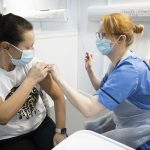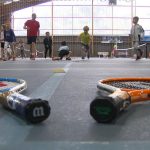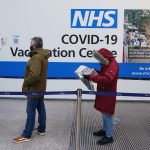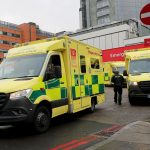Part of the third wave is now below the radar, with significant numbers of COVID cases not showing up in the official daily statistics.
While the government dashboard shows reported cases fell by a third in the week to 24 July, new data from the Office for National Statistics (ONS) shows the real trend was in the opposite direction.
The ONS estimates that almost 952,000 people in the UK were infected during that week – a rise of more than 14% on the previous week.
The ONS does random tests every week of large numbers of people, whether or not they have symptoms. This gives the most comprehensive picture of the UK situation because it includes asymptomatic infections.
Please use Chrome browser for a more accessible video player
The daily stats are just of people who have done lateral flows or had PCR tests.
The continued rise in infections, hidden from view, will be a worry for epidemiologists. They like to have clear sight of the virus because it helps them to anticipate which areas will have higher hospital admissions in a couple of weeks’ time.
So why such stark disagreement on the trends?
The official dashboard shows the number of tests being done has fallen by 14.4%.
Much of that is likely to be because schools have broken up for the summer and children are no longer doing twice-weekly lateral flow tests.
Please use Chrome browser for a more accessible video player
But secondary school age children are still among the most likely groups to be infected. The ONS report shows 3.3% tested positive.
For sixth formers and young adults up to the age of 24 the rate was 3.6%.
Young people are less likely to have symptoms, so they may not come forward for testing. But they can still pass on the virus.
Combine the continued surge in cases with the roll-back of the last of the legal restrictions last week and you have a powder keg.
Please use Chrome browser for a more accessible video player
Whether we now see an explosion of cases – remember, even the health secretary was talking about 100,000 cases a day in August – depends on our behaviour.
If people voluntarily stick to masks, work from home and avoid crowds, then that will help slow the surge.
The take-home message from the ONS figures is that the third wave is far from over.






















